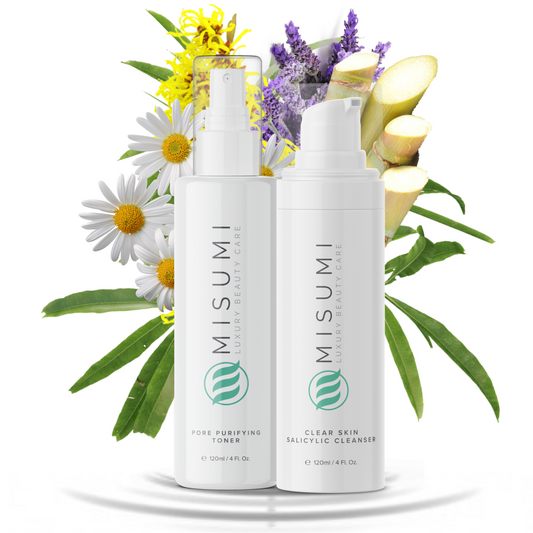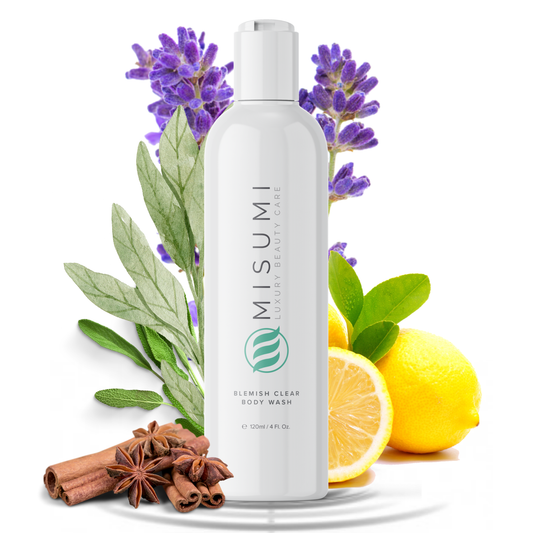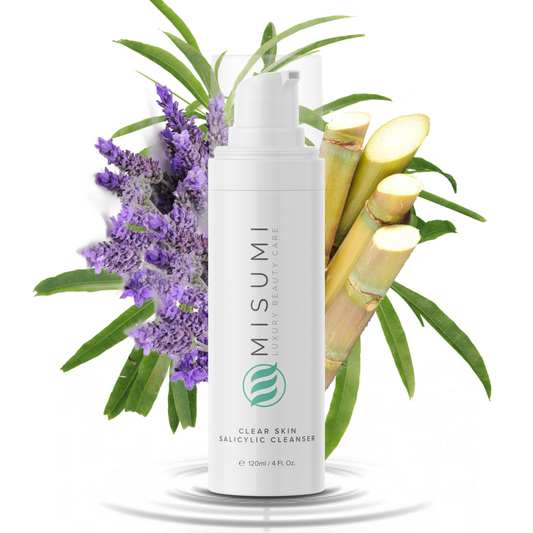Is baking soda for skin the ultimate natural remedy or just another old wives’ tale? People’s opinions are divided and the experts have something to say as well.
Over the internet, you can find a lot of information about the benefits of using baking soda for skin, as well as scary articles that advise you to stay away from it.
So, who’s right? Is it worth trying, or should you definitely stay away?
Let’s try to find out.
What Exactly Is Baking Soda?

Baking soda is the common name for sodium bicarbonate, which is a chemical compound with the formula NaHCO3.
Because it's extremely popular and widely used, it has many synonyms and you can also hear of it as bread soda, cooking soda, and bicarbonate of soda. It’s considered a salt which is composed of sodium(Na+) and bicarbonate(HCO3-). It looks like a white powder and it has an alkaline taste - a little on the salty side.
But, don’t mistake it with baking powder which is actually different. Baking soda is simple and is only one ingredient - sodium bicarbonate (a base that reacts when it comes into contact with acids) while baking powder is more complex and contains sodium bicarbonate and two more acids in its formula. This makes the chemical reactions and uses of the two ingredients completely different.
Baking soda is most famously used for cooking, hence the name, but it’s also used as a biopesticide, mild disinfectant, in pyrotechnics, in pools to increase the alkaline pH value, in sports as a supplement, as a cleaning agent, and in personal hygiene in toothpaste, mouthwashes, and even as a deodorant.
For medical uses, sodium bicarbonate is used as an antacid to treat acid indigestion and heartburn, when mixed with water.

But, the real question remains - should you use baking soda for the skin? Many would advise against this, and there’s a lot of science to back those claims. On the other hand, many people swear by using baking soda for skin, and there’s a lot of anecdotal evidence and success stories to back these claims.
So, what’s the deal?
Benefits Of Using Baking Soda For The Face
We’ll start optimistically listing down the benefits of baking soda when used for the skin.
Treating Rashes And Itchy skin
If you are facing a nasty sting or your skin is irritated and itchy from bug bites, you can use baking soda to help you sooth the symptoms and bring you relief.
It’s believed that baking soda is more effective when combined with other ingredients such as oatmeal or coconut oil.

Treating Acne And Acne Scars
Because of its anti-inflammatory and antiseptic properties, as well as its low pH value, baking soda can help reduce breakouts and manage the irritation and redness. Just have in mind that frequent use of baking soda on the face is not recommended by health professionals because it can strip away the natural oils from your skin and leave it vulnerable to other irritants.
Treating Yeast Infections
Using baking soda to treat yeast infections hasn’t been backed up by science, but still, that doesn’t stop people from using it. It’s believed that the alkalinity, pH balancing capacity and anti-fungal properties of baking soda help treat yeast infections.
A Sunburn Remedy
When your skin is burned it’s pH value becomes more acidic that it naturally is. This is why alkaline ingredients like baking soda which lowers the pH of the skin can be beneficial in these cases and it has been known to soothe the irritation, redness, and itching. Baking soda can help the skin heal faster.

Getting Rid of a SunTan
Another way to benefit from baking soda is by using it to get rid of a tan. Baking soda helps reduce natural tan as it lightens the dark patches on the skin and it has a bleaching effect.
Side-Effects - Should You Use Baking Soda For The Skin?
Our skin has a protective layer on its surface, known as the acid mantle. This acid mantle is made up of sebum (from the skin’s sebaceous glands), which mixes with lactic and amino acids from sweat to create the skin’s pH, which ideally should be about 5.5 (slightly acidic). But, the skin’s natural pH level can vary between 4.5 and 5.5.
Baking soda has a pH value of 9, an alkaline value, which means it can affect the skin’s naturally acidic pH value.
It may sound a little counterintuitive, but the fact that your skin is slightly acidic is a good thing, as the acidic environment makes it able to produce healthy oils that keep it moisturized and protected against bacteria and pollution. In this context, baking soda can cause dryness and sensitivity by altering the skin’s natural pH balance.

Many times our skin’s pH value can go off balance - become more alkaline or too acidic.
If the skin surface is alkaline the skin becomes dry, dehydrated, and susceptible to inflammation. If the skin is too acidic, it’s prone to breakouts and irritation.
Knowing that baking soda is alkaline and lowers the pH value of the skin, if you use it sporadically,when you know that your skin is too acidic, it can actually help you. But, using it on normal healthy skin can throw your balance out of whack and do more damage than good.
So, how do you know your skin’s pH value? Usually, redness, inflammation, and irritation are a sign of a more acidic environment, but you can never say for sure. The best option is to visit your dermatologist and let him determine your pH level.
Common Uses Of Baking Soda As A Natural Remedy

Baking Soda For Acne
By simply mixing one tsp of baking soda and one tsp of water, you get a smooth paste which you can use on your inflamed pimples. in
First, wash your hands and your face and pat them dry with a clean towel. Then, use the mixture of baking soda and water on acne affected areas, by gently massaging for a couple of minutes with your fingers. Leave it on for another 5 minutes, and finally rinse off with lukewarm water. You should finish by applying a non-comedogenic moisturizer as baking soda can be very drying on your face. Don’t do this more than 2 times a week.
Baking Soda For Skin Whitening
Again, mix one tsp of baking soda and one tsp of water to make a smooth, runny paste. Clean your face and neck, and dry them with a soft towel. After this, apply the paste on your face and massage in circular motions for a couple of minutes for better absorption. Let it sit on the face for 10 minutes and then wash off with lukewarm water. Always use a moisturizer at the end.
Baking Soda For Large Pores
If you want a homemade treatment for shrinking your pores, mix together one tsp of baking soda, one tsp of water and one tbsp of honey. Make a smooth but thick paste and apply on a clean face. Massage into the areas where your pores are most open for a couple of minutes. Let it sit on the face for another 5-10 minutes, before washing off with warm water. Honey is one of the best natural moisturizers and it’s a really gentle ingredient that can improve skin quality.

Baking Soda For Oily Skin
As we’ve mentioned a few times throughout this article - baking soda has a drying effect on the skin. When used carefully and in the right way, it can help your skin get rid of the excess oil but still leave you with a natural glow.
To make this smooth paste mix together two tbsp of freshly squeezed orange juice with one tbsp baking soda. After washing your face, apply the mixture evenly on the whole face. Avoid the areas around your eyes and mouth. Once everything is covered leave the paste to act for about 15 minutes. After, rinse off with cold water and pat dry with a clean towel. Use a non-comedogenic moisturizer after using this mask to avoid drying out the face. If your face becomes too dry it can only trigger the sebaceous glands to produce more oil which will leave your face with even more breakouts.

Baking Soda For Burns And Rashes
When the skin is burned its pH value becomes more acidic, meaning baking soda can come to the rescue.
Use one tbsp of baking soda and one tbsp of coconut oil. Coconut oil is great for the skin because it has powerful and soothing antibacterial and anti-inflammatory properties which can calm your burns and irritation. But, be careful since coconut oil is tick and greasy, which means it can sometimes lead to a breakout on acne-prone skin.
Mix the ingredients together until you get a smooth paste. Apply the mixture on the affected areas and let it sit for ten minutes. After this wash your face with cool water. You can use it every day until the rash gets better.
Final Verdict

To summarize everything, baking soda is a natural ingredient, wildly used for many different purposes. People have reported that they benefited from using baking soda to treat sunburns and rashes, acne and acne scars, and yeast infections. But, this is something that’s not backed by science. What’s more, experts warn against the use of baking soda on the face because of its alkaline nature which can damage the skin’s acidic mantle and leave it dry and prone to irritations.
On the other side, when the skin is already inflamed and red, with higher acidic levels, baking soda can bring relief and help balance out the skin’s pH levels. In these cases, you can use some of the home remedies above.








